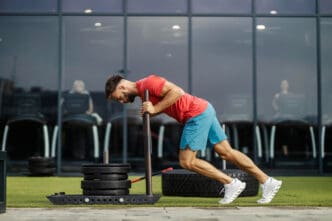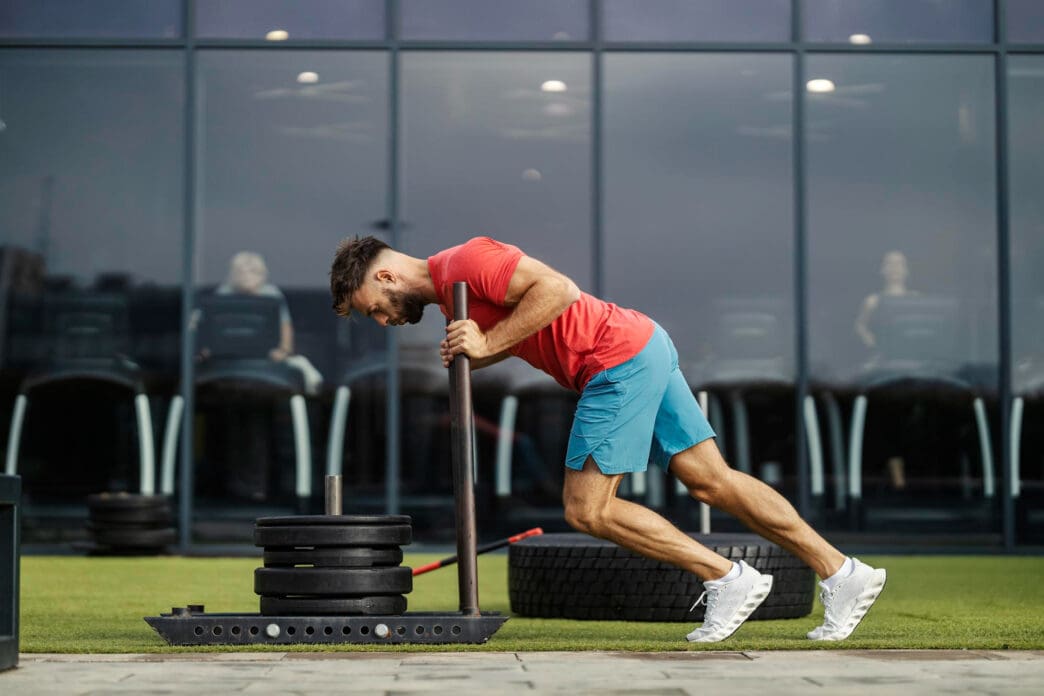A Quick Takeaway
- Strategic exercise, particularly resistance training with compound movements and heavy lifting, along with High-Intensity Interval Training (HIIT), are the most effective methods for naturally elevating testosterone levels.
- Adequate rest and recovery, including 7-9 hours of quality sleep per night, are crucial for optimal testosterone production and to prevent overtraining, which can negatively impact hormone levels.
- A holistic approach combining exercise with key lifestyle factors such as proper nutrition (healthy fats, protein, zinc, Vitamin D) and effective stress management is essential for optimizing and maintaining healthy testosterone levels.
The Story Behind the Trend
- Testosterone is a vital hormone for both men and women, crucial for muscle growth, bone density, mood, and overall vitality, yet its levels can naturally decline with age or due to certain lifestyle factors, leading to symptoms like fatigue and decreased muscle mass. Strategic exercise, particularly resistance training and HIIT, combined with holistic lifestyle factors such as proper nutrition, stress management, and adequate sleep, offers a natural and evidence-based approach to support healthy testosterone production and mitigate these declines.
How to Make It Work for You
- Strategic exercise, particularly resistance training and high-intensity interval training (HIIT), combined with crucial lifestyle factors like nutrition, stress management, and adequate sleep, offers a powerful natural pathway to elevate testosterone levels. This holistic approach can significantly enhance energy, strength, mood, and overall vitality for both men and women, underscoring the body’s capacity to maintain hormonal balance through targeted physical activity and mindful living.
The Community View
- Strategic exercise, particularly resistance training focusing on compound movements and high-intensity interval training (HIIT), is presented as the most powerful and direct method for naturally increasing testosterone levels.
- Optimal testosterone production is significantly supported by key lifestyle factors, including adequate nutrition with healthy fats and micronutrients (zinc, Vitamin D), effective stress management to reduce cortisol, and 7-9 hours of quality sleep nightly.
- A holistic approach that combines both targeted exercise strategies and supportive lifestyle choices is crucial for unlocking and maintaining natural testosterone potential and overall well-being.
Naturally elevating testosterone levels through specific exercise strategies is a powerful, evidence-based approach for individuals seeking to enhance their energy, strength, mood, and overall vitality. This comprehensive guide will outline who can benefit from these methods, what types of exercise are most effective, when to incorporate them into a routine, where these workouts can be performed, and why a holistic approach combining exercise with lifestyle factors is crucial for optimal hormonal health.
Testosterone, often perceived solely as a male hormone, is vital for both men and women, playing a critical role in muscle growth, bone density, fat distribution, red blood cell production, libido, and mood regulation. While men typically have higher levels, adequate testosterone is essential for women’s health too. As we age, or due to certain lifestyle factors, testosterone levels can decline, leading to symptoms like fatigue, decreased muscle mass, increased body fat, and reduced cognitive function. Fortunately, strategic exercise offers a robust, natural pathway to support healthy testosterone production.
The Exercise-Testosterone Connection
The human body is a complex system, and exercise acts as a potent signal to various endocrine glands. When you engage in physical activity, particularly certain types, your body responds by releasing hormones, including testosterone. This response is part of an adaptive process, preparing your body for future demands and enhancing its capacity to build and repair tissue.
Research consistently demonstrates a positive correlation between regular, appropriate exercise and elevated testosterone levels. However, it’s not simply about moving your body; the *type*, *intensity*, and *duration* of exercise are critical determinants of its hormonal impact. Understanding these nuances is key to unlocking your natural testosterone potential.
Key Exercise Strategies for Boosting Testosterone
Not all exercise is created equal when it comes to hormonal optimization. The most effective strategies focus on stimulating the body’s natural anabolic processes, which are directly linked to testosterone production.
Resistance Training: The Cornerstone
Resistance training, often referred to as strength training or weightlifting, is arguably the most powerful exercise modality for naturally increasing testosterone. This is because it directly challenges muscle tissue, signaling the body to initiate repair and growth processes that are heavily reliant on anabolic hormones.
Focus on compound movements that engage multiple muscle groups simultaneously. Exercises like squats, deadlifts, bench presses, overhead presses, and rows are incredibly effective. These movements elicit a greater hormonal response compared to isolation exercises because they recruit more muscle fibers and demand more systemic effort.
Intensity and volume are also crucial. Aim for heavy lifting, typically in the 6-12 rep range, for 3-5 sets. The goal is to challenge your muscles to near failure. Progressive overload, which means consistently increasing the weight, reps, or sets over time, is essential to continue stimulating adaptation and hormonal response. Incorporate resistance training 3-4 times per week, allowing for adequate recovery between sessions.
High-Intensity Interval Training (HIIT): A Potent Ally
High-Intensity Interval Training (HIIT) involves short bursts of maximum effort followed by brief periods of rest or low-intensity activity. Examples include sprinting, cycling, or rowing at full speed for 30-60 seconds, then resting for 60-90 seconds, repeated for 15-20 minutes.
Studies have shown that HIIT can significantly elevate testosterone levels, particularly in the short term. The intense, anaerobic nature of HIIT creates a strong metabolic demand, triggering a hormonal cascade that includes testosterone. It’s also time-efficient, making it an excellent addition to a busy schedule. Limit HIIT to 1-3 sessions per week to avoid overtraining.
Strategic Cardio: Not All Cardio is Equal
While resistance training and HIIT are primary drivers, cardiovascular exercise also plays a role. However, the type and duration matter. Moderate-intensity, shorter-duration cardio (e.g., 30-45 minutes of brisk walking, jogging, or cycling) can support overall health and enhance recovery without negatively impacting testosterone.
Conversely, excessive, long-duration endurance training (like marathon running or prolonged cycling sessions) can potentially *decrease* testosterone levels and increase cortisol (the stress hormone). This is often due to the chronic stress it places on the body, which can shift hormonal balance. Therefore, integrate cardio strategically, prioritizing moderate efforts and avoiding extreme volumes.
Rest and Recovery: The Unsung Hero
Exercise is only half the equation; recovery is where the magic happens. Overtraining is a significant detriment to testosterone levels. When your body doesn’t get enough rest, it perceives a state of chronic stress, leading to elevated cortisol and suppressed testosterone.
Adequate sleep is paramount. Aim for 7-9 hours of quality sleep per night, as testosterone production is highest during deep sleep cycles. Incorporate rest days into your workout schedule, and consider active recovery like light stretching or walking to aid muscle repair and reduce soreness.
Beyond the Gym: Lifestyle Factors for Optimal Testosterone
While exercise is a powerful tool, it operates within the context of your overall lifestyle. For truly optimized testosterone levels, a holistic approach is essential.
Nutrition: Fueling Hormone Production
Your diet provides the building blocks for hormones. Ensure adequate intake of healthy fats, such as those found in avocados, nuts, seeds, and olive oil, as cholesterol (a type of fat) is a precursor to testosterone. Sufficient protein intake is also crucial for muscle repair and growth, indirectly supporting testosterone.
Micronutrients like zinc and Vitamin D are particularly important for testosterone synthesis. Include zinc-rich foods such as red meat, shellfish, legumes, and nuts. Sunlight exposure and fortified foods are excellent sources of Vitamin D, or consider supplementation if deficient. Limit processed foods, excessive sugar, and alcohol, which can negatively impact hormonal balance.
Stress Management: The Cortisol Connection
Chronic psychological stress can significantly impair testosterone production. When you’re stressed, your body releases cortisol. Persistently high cortisol levels can suppress testosterone, creating an unfavorable hormonal environment.
Integrate stress-reducing practices into your daily routine. This could include mindfulness meditation, deep breathing exercises, yoga, spending time in nature, or engaging in hobbies you enjoy. Prioritizing mental well-being is as important as physical training for hormonal health.
Sleep Quality: The Foundation
We’ve touched on this, but it bears repeating: sleep is non-negotiable for testosterone. Studies show that even a week of sleep restriction can significantly reduce testosterone levels in healthy young men. Establish a consistent sleep schedule, create a dark and cool sleep environment, and avoid screens before bed to optimize sleep quality.
Unlocking your natural testosterone potential is an achievable goal through a combination of strategic exercise and supportive lifestyle choices. By prioritizing resistance training, incorporating HIIT, managing stress, optimizing nutrition, and ensuring sufficient sleep, you can empower your body to maintain healthy hormone levels, leading to improved energy, strength, and overall well-being.







